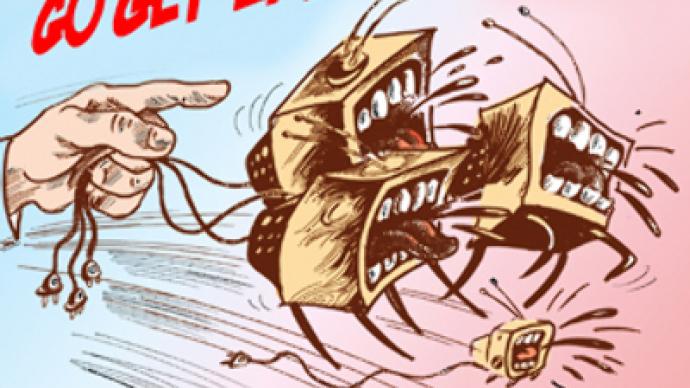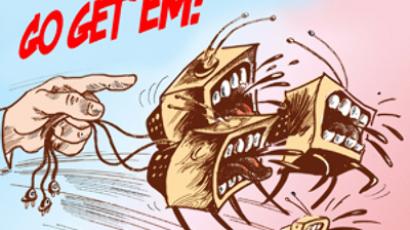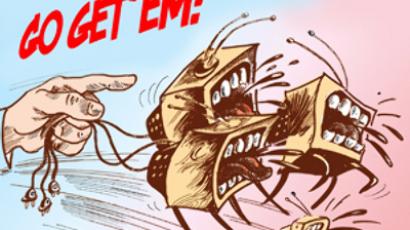Spin-a-war. Burma/Myanmar

The longest civil war on the planet knew the widest variety of media spin.
Spin, war and Burma/Myanmar
The civil war in Burma was fought for so long it outlived even the official name of the country. To be fair, I have to say that the Burmese never noticed the change of the name because in their own language nothing actually changed: Myanmar has been Myanmar for them since the first days of independence. It’s the English name that was changed from ‘colonialist’ Burma to ‘nationalist’ Myanmar.
The new name of the nation represents government media spin aimed at the severing of any remaining ‘colonial British Burma’ roots and a near-total rewriting of big chunks of the nation’s history.
The Burmese or Myanmar armed forces (Tatmado in Burmese) made a huge impact on the national culture in the past twenty years, mainly due to thorough censorship of newspapers and electronic media, through the publications and programs created by government spin doctors at various Army research facilities, and through government oversight of textbook publishing for schools.
The pre-war history of spin
But the spin of the past 20 years is nothing compared to what had been done with the media and by the media in the four decades preceding these years. The civil war that started in 1948 and went on until late 1990s saw so many different propaganda and spin efforts that, after it, nothing new can probably be invented in that sphere of human knowledge.
The Burmese, especially the city dwellers are a literate nation and a reading nation, as well. Even the early pro-independence protests of the late 1920s were centered around a student magazine, ‘Owey!’ (a sound representing in the Burmese language the call of a peacock) edited, among others, by the then-leader of the student movement, later the founding father of the Burmese military and national leader, Aung San.
The British colonial administration, in its striving to build a controllable system of local governance, opened wide educational opportunities (in both English and Burmese) to the population, and if the first generation of the educated class in Burmese society was predominantly Indian by origin, later generations were Burmese, including significant numbers of students from ethnic minorities (Shan, Karen, Kachin and others).
Apart from that, the colonial rulers supported various publications in English and the Burmese language which, being the language of the majority ethnos (the Burmese proper), became a means of communication for all other major ethnic groups co-existing in the country. There were over 30 of these.
British patriotism and the ‘special status’ of Burma in the British colonial empire were the main propaganda themes of the newspapers and magazines published in Burma. By the late 1930s there were three more forces at work on the propaganda stage, all three using various forms of disguise and ‘underground’ circulation: pro-independence activist journalism, Japanese ‘Pan-Asian’ propaganda and Communist propaganda, prompted by the evident success of the Soviet Union as the first Socialist state on the planet. Communist dispatches came into Burma over the border with China.
The Thirty Comrades and the Thakins
This can explain why the independence movement was inclining partly towards the Japanese view of ‘Asia for Asians’ and the Soviet view of Colonialism as a form of exploitation. This can also explain why Aung San and his immediate collaborators first formed the Communist party of Burma and the Socialist party of Burma and then, failing to get in touch with Soviet intelligence agents in China, without a second thought, turned for help to Japanese intelligence agents easily available in Burma and around.
When WW II started, Aung San and his group, called later ‘The Thirty Comrades,’ went to Japanese-occupied territories for military training. They also intensively recruited at home and finally returned to Burma as the commanders of a newly created Burmese Army, allied to Japan.
From that time on Burmese political history has been dominated by these thirty men and their offspring and unrelated successors, plus the remaining figures of the older anti-colonial ‘Thakin’(Masters of the Land) movement, some of whom were also members of the Thirty Comrades group – and this is the case even today. The Thirty Comrades were not all ethnically Burmese, there were several traditional leaders (even princes) of ethnic minorities among them – those who had been sent by their parents to Rangoon University in the 1920s and 1930s.
Every major party and group that survived beyond WW II and independence (achieved in 1947), including both the Red Flag (Maoist) and White Flag (Leninist) Communist parties, the ethnic political organizations in the provinces, the group that supported U Nu’s Buddhist Socialism, even the ‘Burmese Way to Socialism Party’ of General Ne Win that ruled the country up to late 1980s, all were headed by a former Thakin or a Comrade, or both.
United in the idea of independence, most of these leaders had vague views of the future after their victory, while those who had clear-cut plans were usually in deep contradiction with others who had such plans. It seems that the only unifying figure of this complex human machinery was General Aung San who had understood, in due time, that Japanese ‘independence’ was another form of colonial rule, and sided with the Allies against the Japanese on the condition that Burma receives total independence after the war.
The birth of a civil war
Aung San’s plan worked perfectly well till July 1947. The Anti-Fascist League for People’s Freedom, a union of all pro-independence parties representing every social and ethnic group in the country, was actually running the country’s affairs. The temporary Cabinet headed by General Aung San was supposed to be the last government of Burma formed with official British approval. By then, Aung San’s views had evolved to a form of Socialist development based on the unity of the ethnic groups in a federation of highly autonomous states which, however, didn’t possess the right to secede from the federation. The name ‘The Union of Burma’ was already formed when a tragic incident changed the course of history.
On July 19, 1947, just a few months before the date set for complete independence, a group of gunmen from a local fascist party entered the government meeting room and, armed with automatic weapons, shot dead everyone who was there, including General Aung San. The only man to escape death on that day was Thakin Nu, who later became known to the world as President U Nu, because he had left the gathering early for health reasons.
It seems that the unity of the Burmese political and ethnic groups had been solely based on the figure of Aung San. Less then two years after his tragic death, his closest associates fell at each other’s throats, every one of them pursuing his own agenda separate from others. By then, the nation was already independent but the state apparatus was still weak and the army wasn’t yet ready to fight on its own.
The biggest problem was that every faction in parliament, plus the Communist party freshly expelled from parliament (which fact actually became the cause for the Civil war), had its own military force of at least a battalion or a regiment of combat veterans who, until several months before the events, had been regular troops in the Burmese national army under the command of Aung San.
The Anti-fascist League had fallen apart even before the Communist party was expelled. The ethnic militant groups followed the political wings of their organizations and started building strongholds in their ethnic areas. Simultaneously a parade of new publications emerged, altogether over one hundred newspapers and weeklies, all very political in nature, articles in them penned by the best journalists who had gained experience in the previous three to four years of pre-independence and early independence period.
Wide autonomy in a practically unitary state (being called a Union didn’t make it an actual federal Union at all) introduced by Aung San had given an impulse to the fast-track development of ethnic languages, their scripts and fonts, their vocabulary based mainly on Sanskrit and Pali – and many of the new newspapers and magazines were published in these languages making the ideology of the publishers available to the least educated people in every ethnicity (those who had no sufficient knowledge of the Burmese language), which helped the politicians and officers-turned-field commanders recruit and swell their rank and file.
The same thing happened with the radio, an even mightier propaganda and spin tool, and as a result, multi-lingual broadcasting became one more constant fixture in the political life in Burma. Since 1948 it has been permanently employed by the successive Rangoon governments as well as their ethnic minority enemies.
By 1949 the process had gone so far that the government of the survivor U Nu controlled less then a quarter of the country’s territory, and an alliance of the Communists and several larger ethnic armies was closing in on Rangoon. What remained of the Burmese army after all the ethnic forces had been formed was not much.
However, one of the better trained regiments under the command of Colonel (Comrade) Ne Win managed to stop the advancing Communist troops (commanded by his Thirty Comrades peers) for a period of time sufficient for the government’s political maneuvering and media spin to cause a deep crack in the mutual trust between the Communist and the ethnic forces. Mere weeks later, all ethnic and Communist units were back at their strongholds in the frontier areas, and on the defensive.
The decade of quiet war and the aftermath
The following decade, of considerably quiet development on the path of U Nu’s Buddhist Socialism, turned out to be a short break in the war. Hostilities never stopped, the conflict only moved to the mountainous frontiers where fighting is much harder than in the plains, and it burned as a slow flame there until both sides – or rather, every side of that war, were ready for another major clash. It came in 1958 and resulted in another semi-defeat of the armed opposition to the government – and brought about the change of government.
President U Nu explained in his multiple dispatches to the nation that for the time being it was better to have a military government, and appointed Ne Win, already a General, to head it. By that act U Nu, one of the best and brightest representatives of the Asian intelligentsia, by a unilateral decision created the first military government of Burma and gave the Burmese military the first taste of political power. In 1960 he took the power back, but not for long.
It turned out that U Nu’s policies and his blind personal trust in many of his subordinates had created a huge network of corruption centered on the government and parliament of the country. Among the population, the term ‘member of parliament’ became a synonym of a ‘crook, a totally corrupt person’ and pro-Communist sentiment began to rise. The ethnic militants were once again ready to form an alliance with the Communist party of Burma (now split in two wings: the Maoist and the Leninist).
That is why, when in 1962 General Ne Win organized a coup and took power from U Nu, the majority of the public supported his move. From the very first step, Ne Win and his group proclaimed the idea of ‘The Burmese Way to Socialism,’ on the one hand dismissing the Burmese Communists’ claim to the monopoly on the Socialist ideology and, on the other, placing a well-funded claim for the legitimacy of their ‘succession’ of ‘Buddhist Socialism.’
Nonetheless, persuading the outer world, including India, the Soviet Union, and the Non-Alignment Movement, took a lot of effort and spin. In the first years after the coup, government publications in English became much better in quality (Ne Win hired Western professionals to improve the nation’s English newspapers and magazines). But after a few years, that practice went out of fashion together with the English tong itself when even teaching of English at schools was cut back, leaving only one hour a week for secondary and two hours a week for high schools.
Time takes its toll
From 1962 till 1989 the Burmese civil war was again trapped in the frontiers, never ending, never escalating. But the spin and propaganda went on and on. In the Communist party, which had the largest fighting force in the 1950s, a ‘cultural revolution’ copied from the Chinese experience decimated the rank and file and eliminated the top leaders, such as Thakin Tan Tun. By the late 1970s, Beijing struck a deal with Washington and as a side effect stopped supplying the Burmese communists.
The Communist army by then consisted of 80% hill tribe soldiers (the Red Wa mainly) who were not even deeply indoctrinated, and 20% Burmese officers with some pre-civil war background and a bit of knowledge about Marxism. No surprise, given the fact that Communist troops operated in the Golden Triangle area, that the Communists decided to enter the only lucrative business around: production and trafficking in illicit drugs. The remnants of that force, minus the true Communist officers who have died out, are still involved in drug trafficking up there in the mountains today, only the opium and heroin have been replaced by amphetamines.
Another major group, the Shan (Thai Yay) Mong Tai Army, headed by the famous drug dealer and freedom fighter Khun Sa (he was actually both: a successful heroin dealer with a group of U.S. arrest warrants to his name, and an accomplished fighter for the freedom of the Shan people), was very active in the 1970s, fighting both government troops and the Communists. Later, the purely political struggle against the latter turned into a business conflict (when the Communist forces turned to drugs for income). Only in 1996, after so many changes in Rangoon, Khun Sa made peace with the government (he needed no peace with the Communists because by then the party and the military force had totally lost all the Communist ideas and became just another drug gang consisting of ethnic fighters).
Aung San Su Kyi as a catalyst and transponder
The new peak in the civil war and spin fell on the period between 1988 and 1991. By then, even the ethnic armies up in the frontier mountains were sick and tired of the war, and they also had lost too much of their strength to infighting and fighting each other to be ready to go to the Capital once again. But they were glad to be left alone by government troops, now preoccupied with the demonstrations and riots in the cities. So, the ethnic leaders watched attentively how the situation in the plains evolved, waiting for their chance to say their word in history.
Such was the situation and balance of power in the Burmese civil war when the ailing Ne Win and his circle of friends were replaced by yet another, younger group of Generals, as eager for modernization and national prosperity as Ne Win himself had been in his day. They took power from their elders and started planning: a new constitution, a controlled general election, the old and effective Indonesian model.
They never knew what hit them. They still don’t understand how could it have happened. But the facts are the facts: the change of power in Burma exposed it for a very short time to the international community of which the generals had been so much afraid all along that under Ne Win they had managed to quit even the Non-alignment movement, to remain free from any outside pressure. There had always been enough pressure inside – from all the fighting groups and their media – on the government, and vice versa…
The exposure occurred accidentally. Fate brought Su Kyi, the daughter of General Aung San, a British citizen, to Rangoon to stay with her dying mother. Spin carried her to the street meetings organized by the more radical groups of the Burmese youth after the 1988 massacre and turned her into the main transponder through which the ideas of Western liberal democracy infiltrated and flooded the senses of the general public in Rangoon.
Su Kyi’s status as the daughter of the national hero, the father of independence who simultaneously was the father of the Burmese armed forces and all of the Burmese post-WW II political movements and parties, made her invincible for a while – long enough for the creation of the National League for Democracy and for forward-controlling all the new troubles that befell Burma in the form of international sanctions and the status of international pariah state.
What next, and what about that war?
There is no doubt that Aung San Su Kyi is a hero and a champion of democracy. But she is also a victim and central figure of a grand international media spin. There is no proof yet that the Western form of political systems, the liberal democracy, is instrumental for every country’s way to prosperity and well-being. There is actually living proof of the very opposite: China. And there are Vietnam and Laos next door, who follow a similar path and feel all right. There is also ASEAN for which the principle of non-interference in the internal problems of members has been paramount from the start.
And there is the larger ‘world community,’ i.e. the U.S., the EU and Britain, and there is that link of spin between that community and the NLD inside Burma which, like a pipe, is pumping the liberal democratic vision of the world into that far-away and undeveloped land on a daily basis. Pity that not too many Burmese beyond the NLD are educated enough to appreciate it. Instead, they appreciate the food on their plates and use appliances and household machinery imported from China.
Spin is strong. My opinion is that the whole deal with the international sanctions against Burma (Myanmar) is a product of international media spin. Spun by whom? Well, if we look at the economic results (political results are zilch), I would say the Chinese. Because China is the only nation involved that benefits or, in plain words, is making a top dollar out of these sanctions. By initiating the sanctions, the world community has simply given China a gift of an entire market of a 40-million-strong country.
The Burma spin sometimes went as far as to suggest forceful regime change – words to that effect were heard around Asia in the late 1990s. Not ever since, but the night is young: done with Iraq, Afghanistan-Pakistan and Iran, the world community, led by the U.S., may again turn its eyes on Burma: if there’s no Kosovo to liberate or Belgrade to bomb, there should be something else. Why not Burma?
Yeah, and what about that civil war? Well – it ended. On its spare time from keeping Su Kyi under house arrest the Rangoon government negotiated and signed peace agreements, one by one, with nearly all ethnic militant groups, ending the process by 1997. There are a few fighting units still in opposition to the government, but they are marginalized by their own brothers in those majority groups that signed the agreements and are now enjoying the fruits of peace.
Evgeny Belenkiy, RT.














